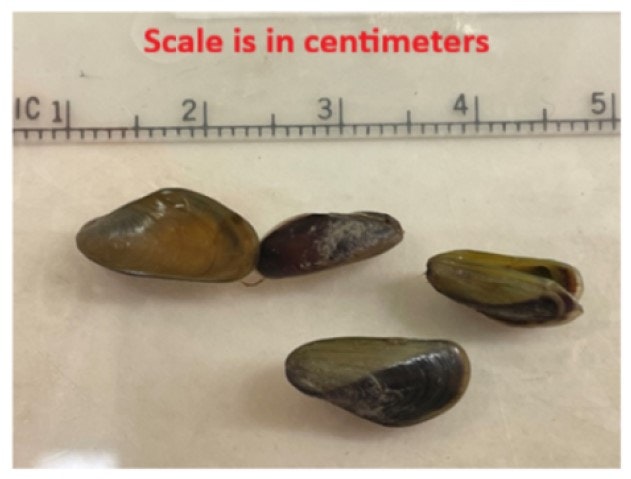Invasive Non-Native Golden Mussel
Invasive Non-Native Golden Mussel Discovered in California
Golden mussel (Limnoperna fortunei), an invasive, non-native freshwater/brackish bivalve, was recently discovered in the Sacramento - San Joaquin Delta. This discovery is the first known occurrence of golden mussels in North America. The species poses a significant immediate threat to the natural ecosystems, water conveyance systems, infrastructure and water quality in California and across the U.S. Golden mussels are similar in appearance, biology, and impacts to quagga and zebra mussels, but can establish in waters with considerably lower calcium levels than required by quagga and zebra mussels.

Identification
These mussels are similar in shape and size to quagga and zebra mussels (PDF)(opens in new tab)
- Small, typically under 1.5 inches in length
- Firmly attached to hard/semi-hard surfaces
- Upright, shell margins opposite of attached side
- Shell color is light golden to darker yellowish-brown to brown color
- Freshwater and brackish water
Shortly after fertilization, the larvae become mobile; capable of coordinated swimming and they disperse in the water column. Once a suitable substrate is found, the mussels attach themselves to the to the substrate by byssal threads and begin developing into adults. Maturity is reached when the mussel attains a length of approximately 5.5 mm (almost ¼ inch) which occurs within the first year of its lifespan.
Golden mussels can grow in dense clumps or colonies containing as many as 80,000 -200,000 organisms per square meter.
GoldenMusselFactSheet.pdf